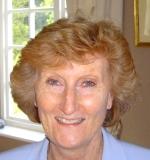Success Stories in Using Stratified Systems Theory
- CRA started from what were the major systems that needed to be aligned and coherent with the culture. Change programs probably, and depending on the size of the organization, went on for five or six years. It's really thinking about very seriously the design of those systems and then thinking about what behaviors will that drive.
Speaker A I was working with Ian McDonald and in the 80s, CRA had completely restructured using Stratified systems theory as their basis across all of their companies. So that was iron ore, gold minin...
Transcript of the presentation video
NOTE: This transcript of the video was created by AI to enable Google's crawlers to search the video content. It may be expected to be only 96% accurate.
Speaker A I was working with Ian McDonald and in the 80s, CRA had completely restructured using Stratified systems theory as their basis across all of their companies. So that was iron ore, gold mining, aluminium, and had spent a lot of time on both the design of roles, the design of the organization and the broadbanding, but hadn't up until that time focused very much on the leadership aspect or the people aspect. And one of the things that CRA were focusing on then was also wanting to change the culture to be able to offer employment contracts directly with the workforce. And obviously, if you want the workforce to take that up, then you have to have really good leadership. And so there were major projects over a long period of time which was improving the quality of leadership, but also thinking about the systems within the organization because obviously it's no good saying you're developing a particular culture if the systems and the processes tell a different story. And for me, that was a really exciting time because it also gave me the opportunity for the first time to work from the top to the shop floor. And I think from a consultant's perspective, we swung around in boardrooms quite a lot, but it's not often that we really are able to work with the people doing the work. The miners, the truck drivers, the professionals on the ground, the geologists, the engineers. And so that gave a wonderful insight, again, into organizational life and how easy it is for the top of the organization to become divorced from the bottom. So the programs that we were running also enabled that feedback mechanism to kind of understand the beliefs and the mythologies in the organization. Well, I can certainly within the CRA, and you've probably heard this also from Ian McDonald, one of the things in that particular work that was doing was really starting from what were the major systems that needed to be aligned and coherent with the culture? And actually, how did you start to design those systems, including people who were going to be using them? Because I think very often major organizational systems are either designed at too lower level and they get overcomplicated, or they're designed by people who don't necessarily understand across the organization and don't understand the impact that those systems will have on people. And I'm sure we've all experienced a purchasing system where you need 72 keystrokes to get out a spanner. So it's really thinking about very seriously the design of those systems and then thinking about what behaviors will that drive, how will people respond to that. So understanding where people are now to be able to predict how they're going to respond to that change and helping them to visualize the future and understand the present and think about what the journey is going to be to achieving that future. But the programs also included consultants working with managers because it was very clear that the managers in the organization. The leaders had to live this. They had to be part of it. They couldn't just coast. And certainly the CEOs of the companies were very clear about that. And that was part of the leadership behaviors that were expected. The change programs probably, and depending on the size of the organization, I mean, with the Commonwealth Bank, it was probably those programs went on for five or six years. So they were long term and starting with the top of the organization and then working through so that everybody right the way down to the people working at the shop floor went through them. So they were part of that. So that they were part of the change of language, the change of culture. And they also had the opportunity to feedback. So they made presentations about what, from their perspective, wasn't going well, and then that information was collected and was passed up. So it was a very thorough process from the buyer's perspective. We did a lot of work with Zurich over a two to three year period. The Zurich Insurance, they're a large Swiss based insurance company and again.
Major organizations and consulting firms that provide Requisite Organization-based services





